IN THE MOOD FOR LOVE: Seminal Dark Romance Decoded

Naturally, to a large extent, with rather cheesy action films that incorporate elements of martial arts cinema, which in the 1980s and 1990s were released on DVDs at an uncontrolled pace and further distributed to external markets (including Europe). Fortunately, these mass-produced, low-budget films are gradually giving way to original expressions from Hong Kong filmmakers, who are gaining a growing number of fans worldwide.
When I think of the term “Hong Kong filmmaker,” a name immediately comes to mind, which became known to a broader audience (especially in Europe) in 1997 after the success of the film Happy Together at the Cannes Film Festival. From then on, it only got better, and the director continued to make his mark in the history of cinema, gaining increasing recognition, particularly with his poetically-toned work In the Mood for Love, considered by many critics as the best in his entire oeuvre. I’m talking, of course, about Wong Kar-wai.
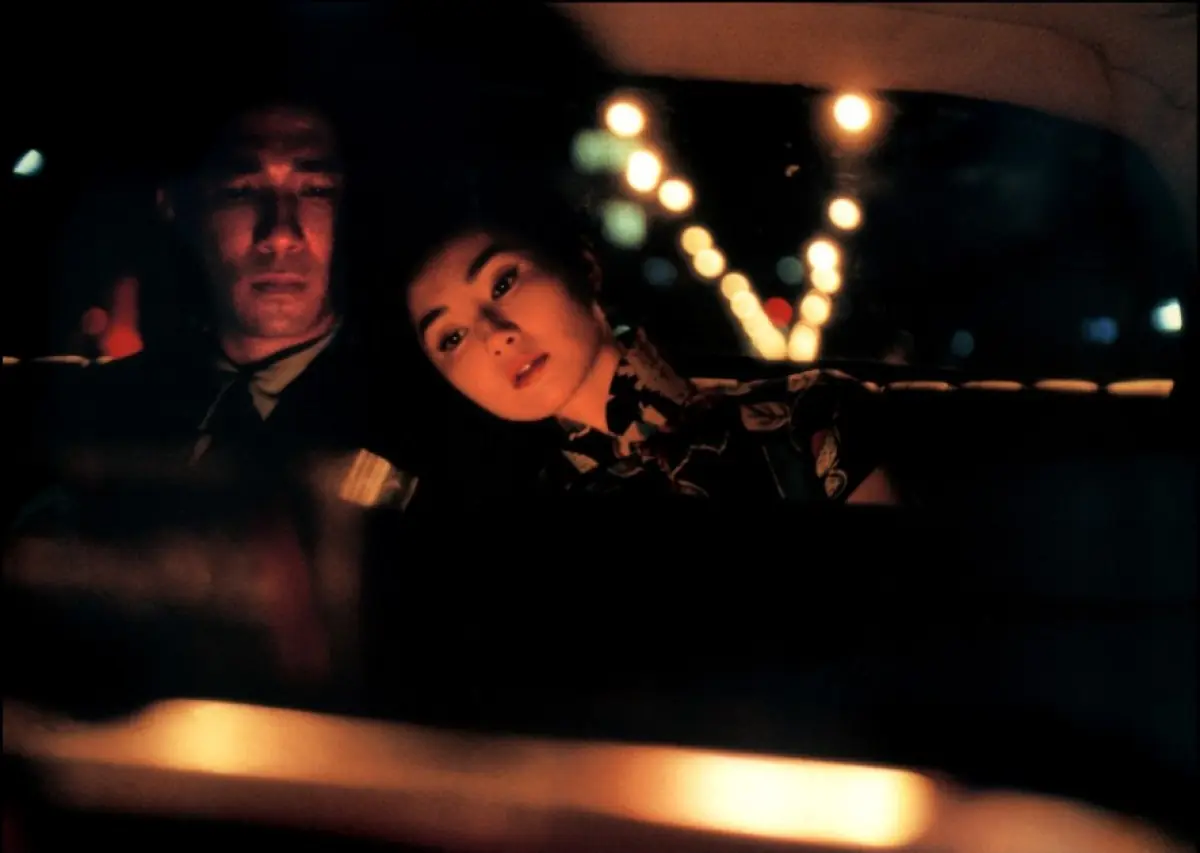
At the age of five, Wong Kar-wai left his hometown of Shanghai with his mother to settle permanently in Hong Kong. The Cultural Revolution in China led to a twelve-year separation between the young Wong Kar-wai, his father, and two of his siblings, which undoubtedly influenced the recurring themes of alienation in society and eternal longing that obsessively appear in his later work as a mature director. The original and undeniably auteur style he has managed to create in his more than twenty years of work is recognized worldwide and, as I mentioned earlier, appreciated at international film festivals. The unhurried pace of narration, the alternating use of static and dynamic shots, slow motion, the special role of details and props, and the distinctive camerawork based on close-ups are some hallmarks of his ever-evolving style that defies simple classification. Of course, the characteristic framing and visual aesthetics in his films are mainly due to his long-time collaboration with Australian cinematographer Christopher Doyle, who was later replaced by Darius Khondji in Wong’s later films (My Blueberry Nights, The Lady from Shanghai).
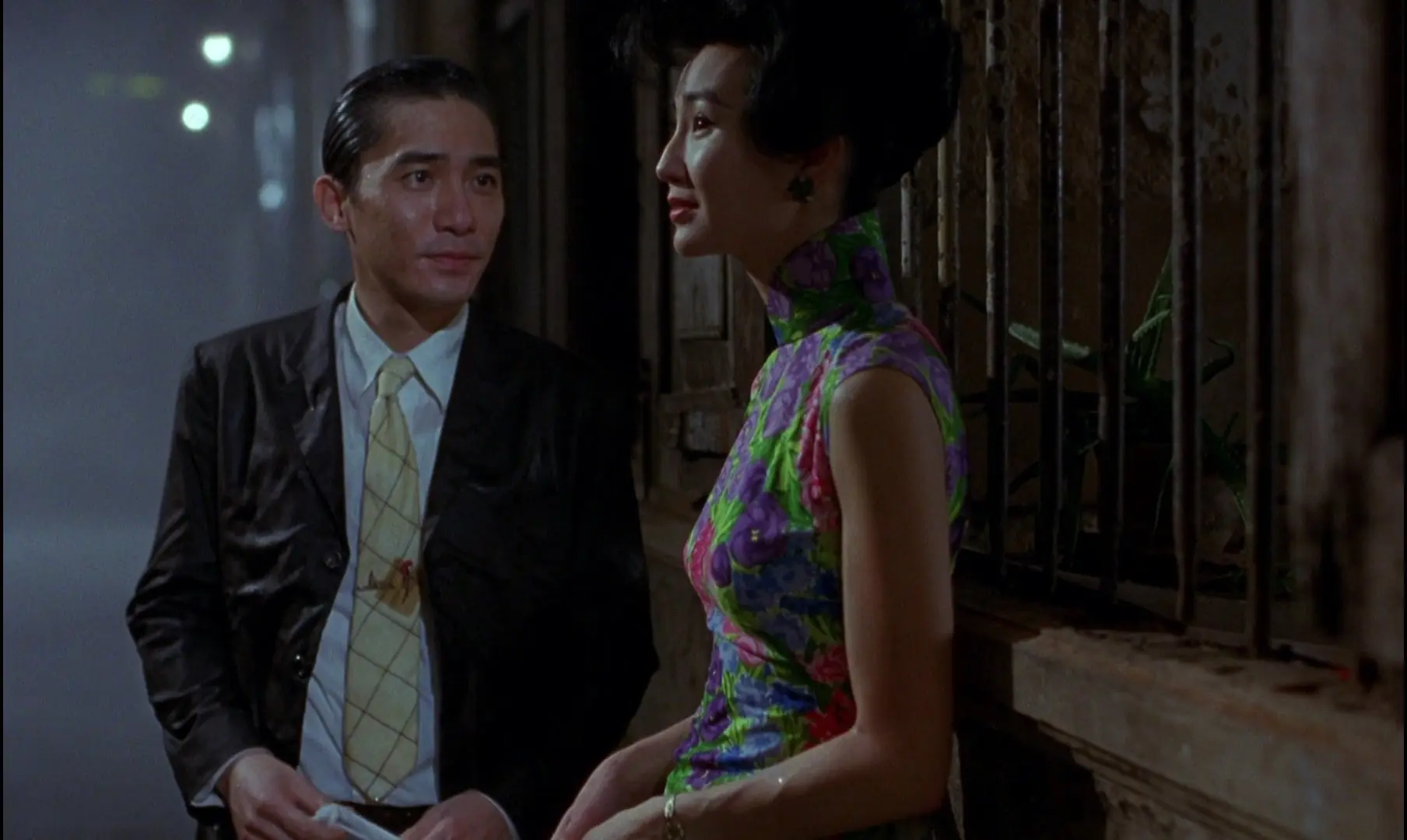
Every prop plays a significant role in Wong’s works, becoming a character that participates in the cinematic events. Through blurred shots, color filters, and a specific way of framing, the director creates a unique, surreal world that is lost between reality and imagination, as seen from the perspective of a voyeur hiding in the cigarette smoke or rain showers, like the characters in In the Mood for Love.
On the other hand, by focusing on the role of objects in the presented world, Wong attempts to counterpoint the lost consciousness of his characters, who are trapped in ideals and fantasies—an approach many critics interpret as a manifestation of haiku poetry. Haiku is a record of sudden revelation when we discover the extraordinary in the ordinary—when through manifestations of materiality, we discover the inner workings of our soul. Perhaps it is through a series of mundane activities performed by the characters in In the Mood for Love and by going beyond the superficial meaning of the presented details, that we are able to experience revelation, to see what we had not noticed before, to grasp the essence of reality and get closer to it, just as the film characters try to do. The objects become the only manifestation of the reality surrounding Wong Kar-wai’s characters.
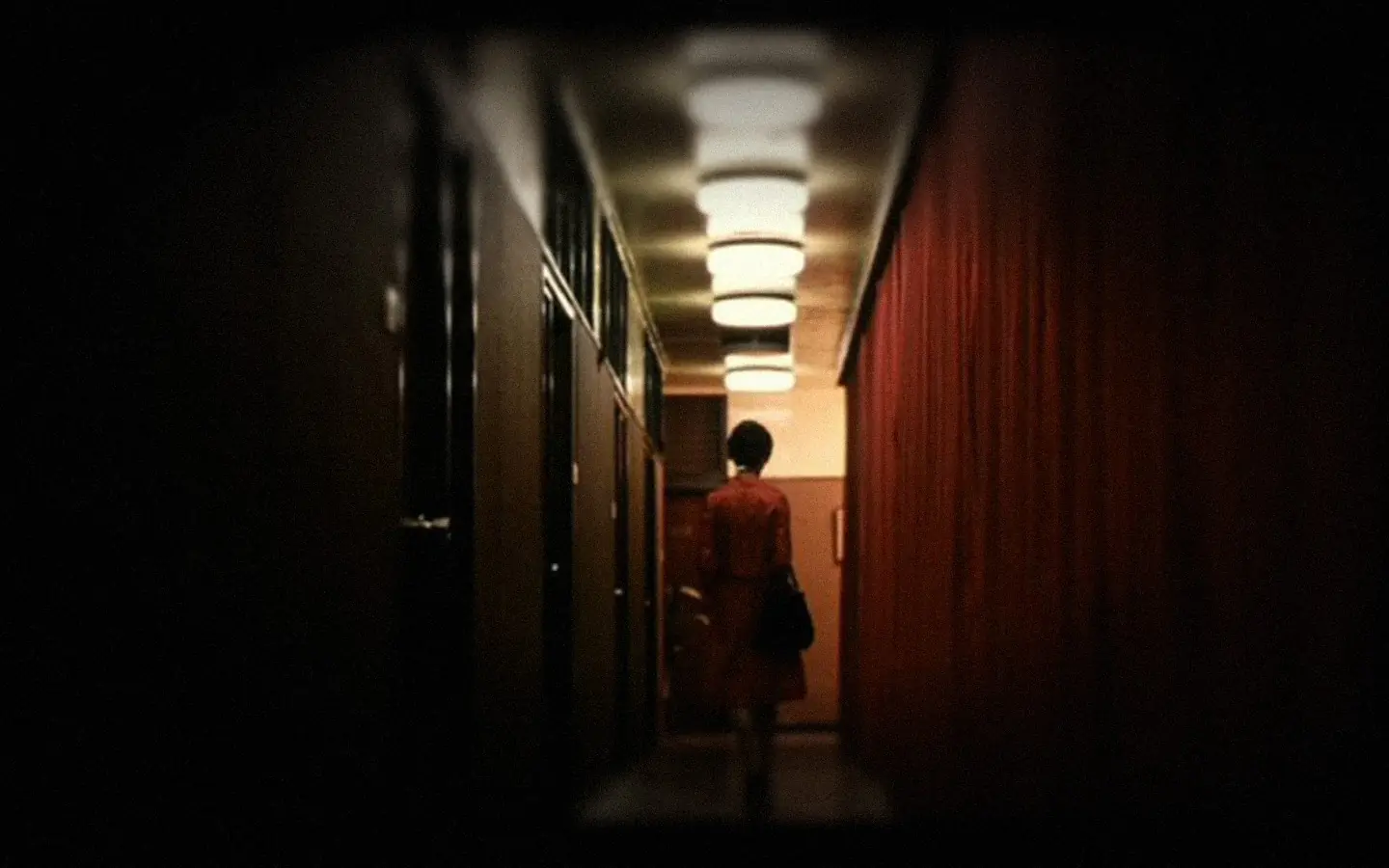
Wong’s body of work forms a coherent expression, where each film resembles a word that is closely linked to the earlier parts. The characters created by the director exist not only within the presented world but also beyond it, reappearing in subsequent works, both directly (thanks to his regular collaboration with selected actors, including Maggie Cheung and Tony Leung) and symbolically. Wong’s films complement each other, continuing unfinished thoughts and incomplete expressions. The recurring characters are figures representing the unchanging nature of humanity, universal longings, and a perpetual sense of unfulfillment. Often, as in the case of In the Mood for Love and 2046, the characters return in a direct way. Mr. Chow in 2046 is still the same man we met in In the Mood for Love, his longing has not diminished, and the past events still live in his mind, influencing his perception of the present. In most films, the characters return symbolically, forming a collective figure that expresses unfulfillment, the inability to connect with another person, loneliness in the crowd of large urban agglomerations, and above all, enslavement by memories.

In the Mood for Love is a classic melodrama. A story as old as time—he and she are both betrayed by their spouses, hurt and deceived by the ones they loved, they gradually become friends and develop a dangerously strong connection that slowly turns into desire.
A cliché? Not this time. For films like In the Mood for Love, describing or summarizing the plot should be forbidden, as even the slightest attempt cannot capture the essence of its poetic nature. This classic “love story” (which might be off-putting due to its rather unfortunate title) is, however, one of those rare melodramas that avoids trivialization, sentimentality, happy endings, and moralizing. I would rather call it a study of male-female relationships, a nostalgic portrayal of unfulfillment and the fervent search for love.
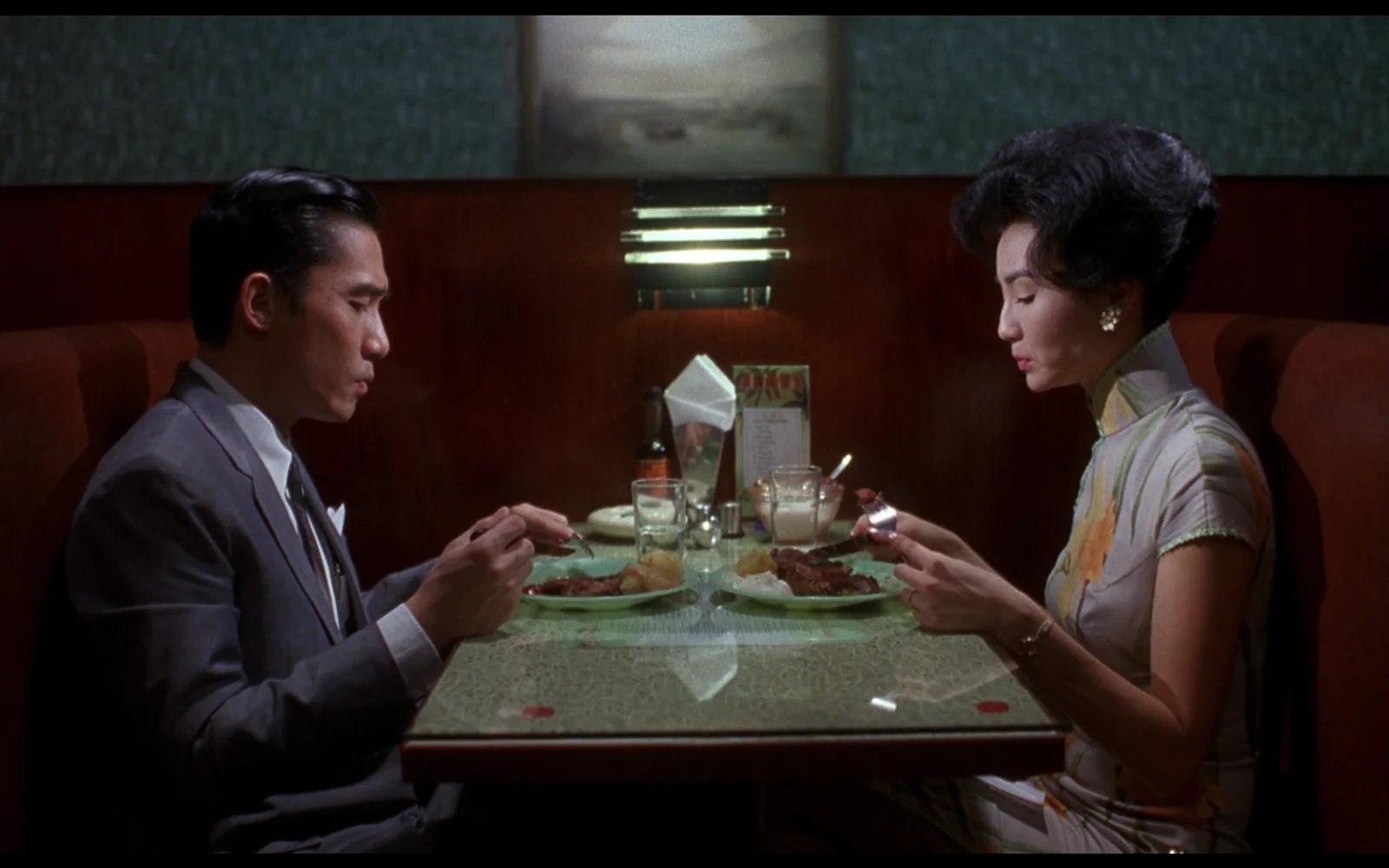
The themes characteristic of Wong’s work, and which recur like a mantra, are presented in In the Mood for Love in a unique form, which is not just a beautiful but narratively unmotivated image that evokes aesthetic ecstasy. Every frame is a carefully considered part of the whole, expressing and complementing the characters’ behavior, often through contrast. The universality of the conclusions presented finds its best reflection in the director’s success at European film festivals. In the Mood for Love triumphed at Cannes (Palme d’Or for Tony Leung and the Technical Grand Prize), won a César and an award from the European Film Academy in the foreign film category, and received many nominations for the most prestigious festival awards in Europe. The director does not create a hermetic world immersed in Eastern philosophies, oriental and incomprehensible to the average European, but rather focuses on the universality of the issues of loneliness, longing, and enslavement by memory, which are equally felt by every individual, regardless of their origin and the culture in which they were raised.
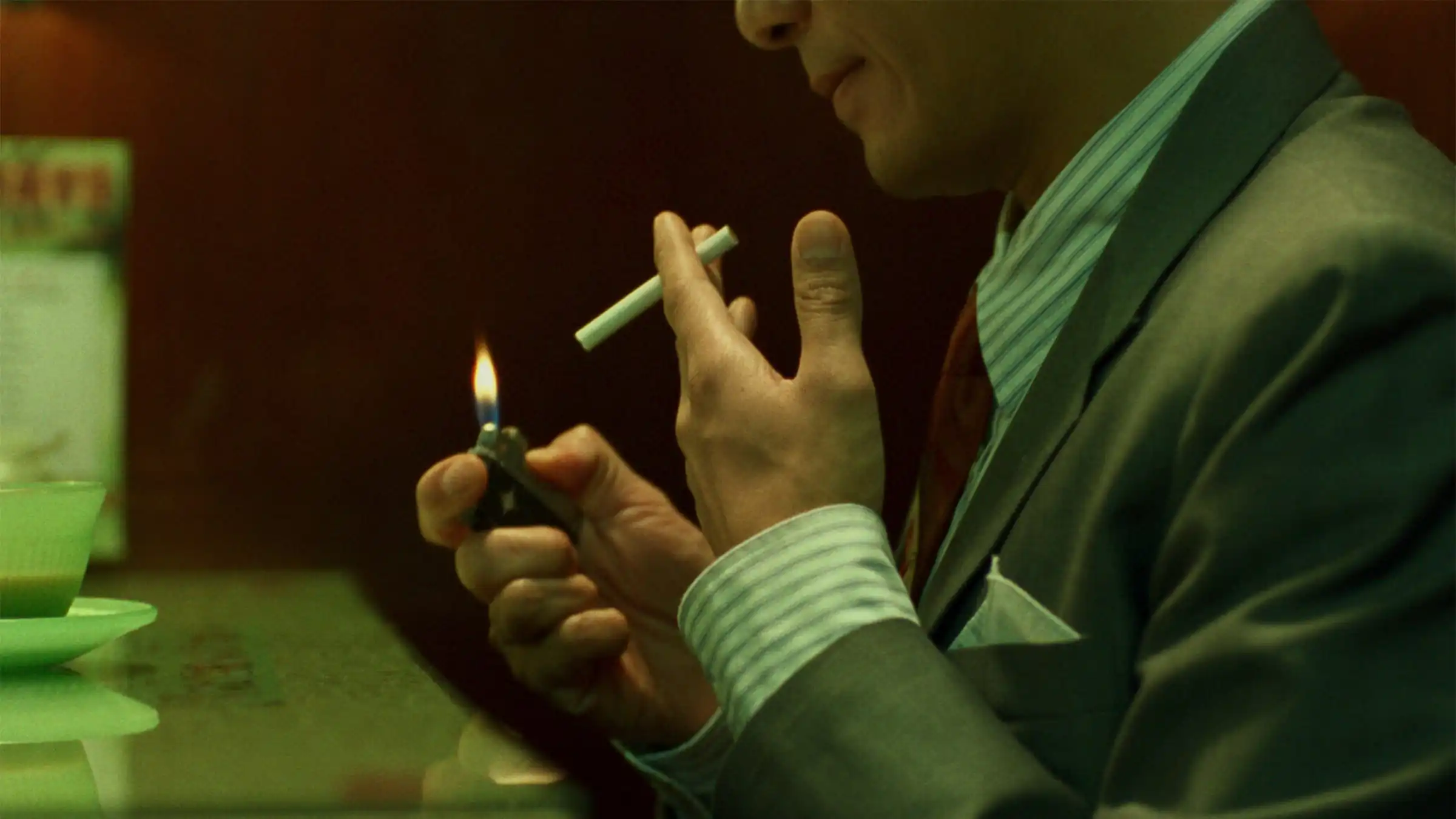
Clocks
Time, not only in In the Mood for Love but throughout the director’s entire body of work, becomes the main character of the cinematic narrative. Each character shapes their present self through past events and recurring memories. The objects surrounding the characters become the keepers of their secrets and participants in personal tragedies and disappointments, storing within their material everything that belongs to the past. They continue the existence of their owners and serve as vessels of memory.
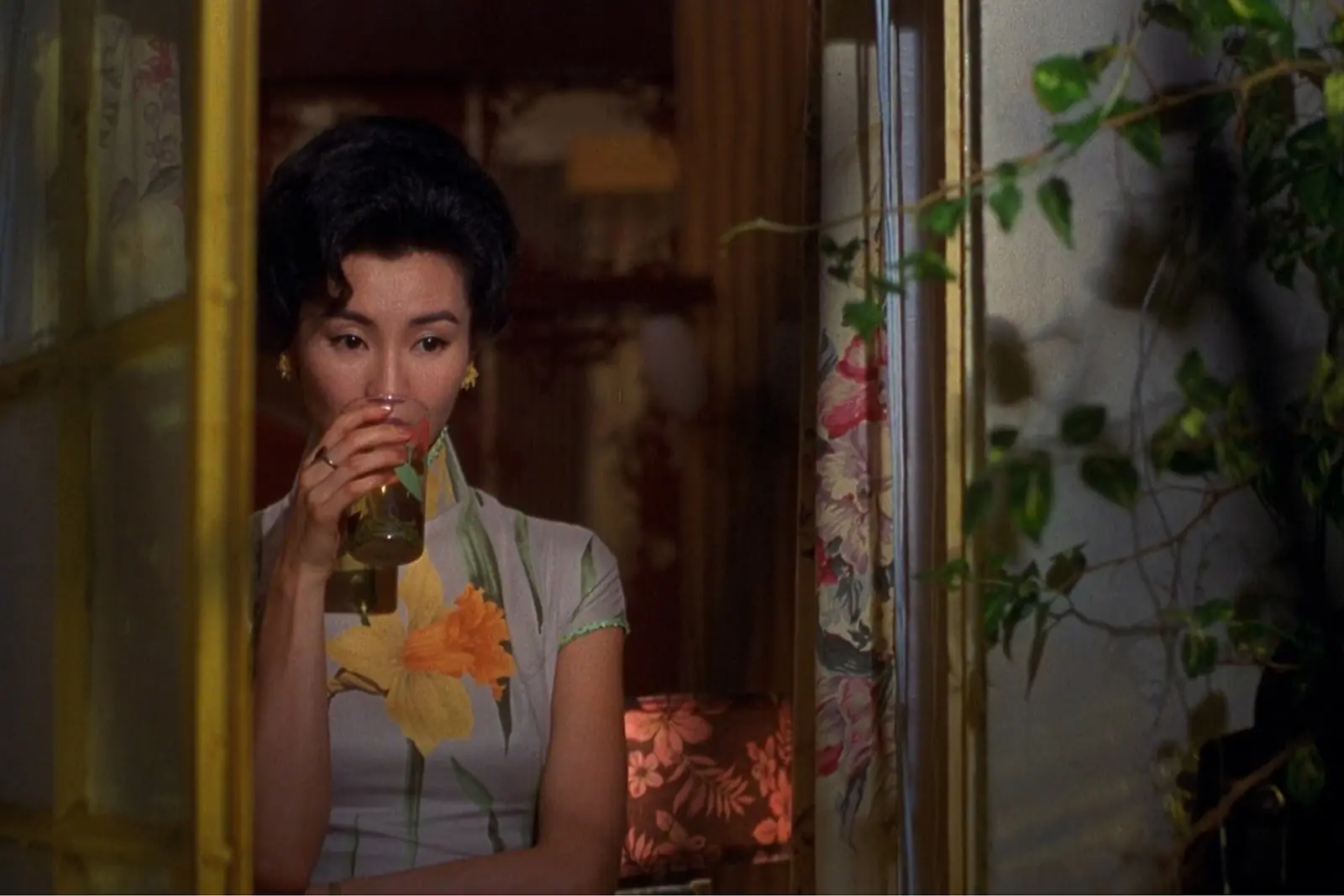
Mr. Chow (Tony Leung) tells his companion that in ancient times, if someone had a secret and didn’t want to share it with others, they would go to the mountains, find a tree, carve a hole in it, and whisper their secret into it, then cover it with mud. The trees became temples of secrets, silent confessors, holding the past within their cores. Similarly, this happens with every material manifestation of the past that both reminds of past events and takes part in them. Seeing familiar objects, returning to places permanently etched in memory, hearing certain sounds, or smelling specific scents associated with important events, the characters lose the distinction between past and present. These seemingly insignificant details connect the “here and now” with what has passed, stirring the memory and transporting our consciousness back to the moment when that detail first appeared. Props play an extremely important role in the cinematic narrative; through a handbag and a tie, the characters learn about their spouses’ infidelity, and it is these very objects that initiate contact between them, becoming almost culpable for what happens next.

The past returns in the characters’ minds in a relentless and persistent manner. Hong Kong conceals the secrets of Mrs. Chan (Maggie Cheung) and Mr. Chow across vast stretches of its space, and memory is not, as one might think, a finished, written page that can be revisited freely. The mechanisms of memory operate through association, referring to specific details, remembered moments, fragments of a second. As Gilles Deleuze stated, Memory is not within us; we move through the memory-Being, through the memory-world. According to Deleuze, experiencing time is only possible through memory, and the past, future, and present are not separate, autonomous entities but an open whole. Wandering through the labyrinths of memory, we “jump” between specific circles of the past.
The characters in In the Mood for Love are always waiting for something or someone. Mrs. Chan waits for her husband, Mr. Chow for his wife. Together, they long for true affection, yearn for freedom, and nostalgically gaze into the past, wondering how their lives would have turned out if they hadn’t decided to marry. They are disillusioned, deceived by a reality that bears no resemblance to the imagined world of ideal love and mutual understanding. One of them bitterly remarks, When you’re on your own, you’re only responsible for yourself. In marriage, coping on your own isn’t enough. It is only when the characters are with another person, especially the one they vowed eternal love to, and with whom they cannot engage in any dialogue beyond questions like “What will you have for dinner?” or “How was your day at work?” that they feel their loneliness most acutely. Mrs. Chan is a regular cinema-goer. When her husband is away on business, she (besides her ritual of going out for noodles) cannot resist attending an evening screening.

In the Mood for Love ‘s world becomes a symbol of fantasy, allowing her to forget reality and transport herself into the realm of ideals. Mr. Chow, in one conversation, mentions that he also liked going to the movies before he got married, but fulfilling one’s dreams and desires in a life shared with another person is much more difficult than when alone. Freedom becomes yet another utopia for the characters, a dream that they will never be able to achieve, even if they decide to leave their unfaithful spouses. Enslavement by memory, the scars of past events, and the desire for a pure, and therefore unattainable, feeling of love bind their minds more than the sacramental “yes” and the symbolic marriage knot.
Playing Life
Mr. Chow and Mrs. Chan are like puzzle pieces in Hong Kong that don’t quite fit. They learn to assume certain roles, though they are not entirely able to carry them out. Together, they reenact situations that are about to happen, suggesting to each other how they should behave in those situations. The characters attempt to create a script for the upcoming conversation in which their spouses’ infidelity will be exposed. They constantly assume roles, perform the “theater of the world,” increasingly retreating into internal nostalgia and losing the boundary between the fiction they create and reality. Mr. Chow and Mrs. Chan try to step into the roles of the unfaithful spouses, wanting to understand how the affair began, reenacting behaviors that they believe the unfaithful partners displayed. The affair becomes a kind of social game governed by specific rules, everything seems perfectly calculated and widely accepted by society. Every word, gesture, and smile has its designated time and place. However, the director does not focus on the unfaithful spouses, treating them in a completely anonymous manner. We never see their faces; they represent a symbolic, empty space where any average Joe or Jane can fit.
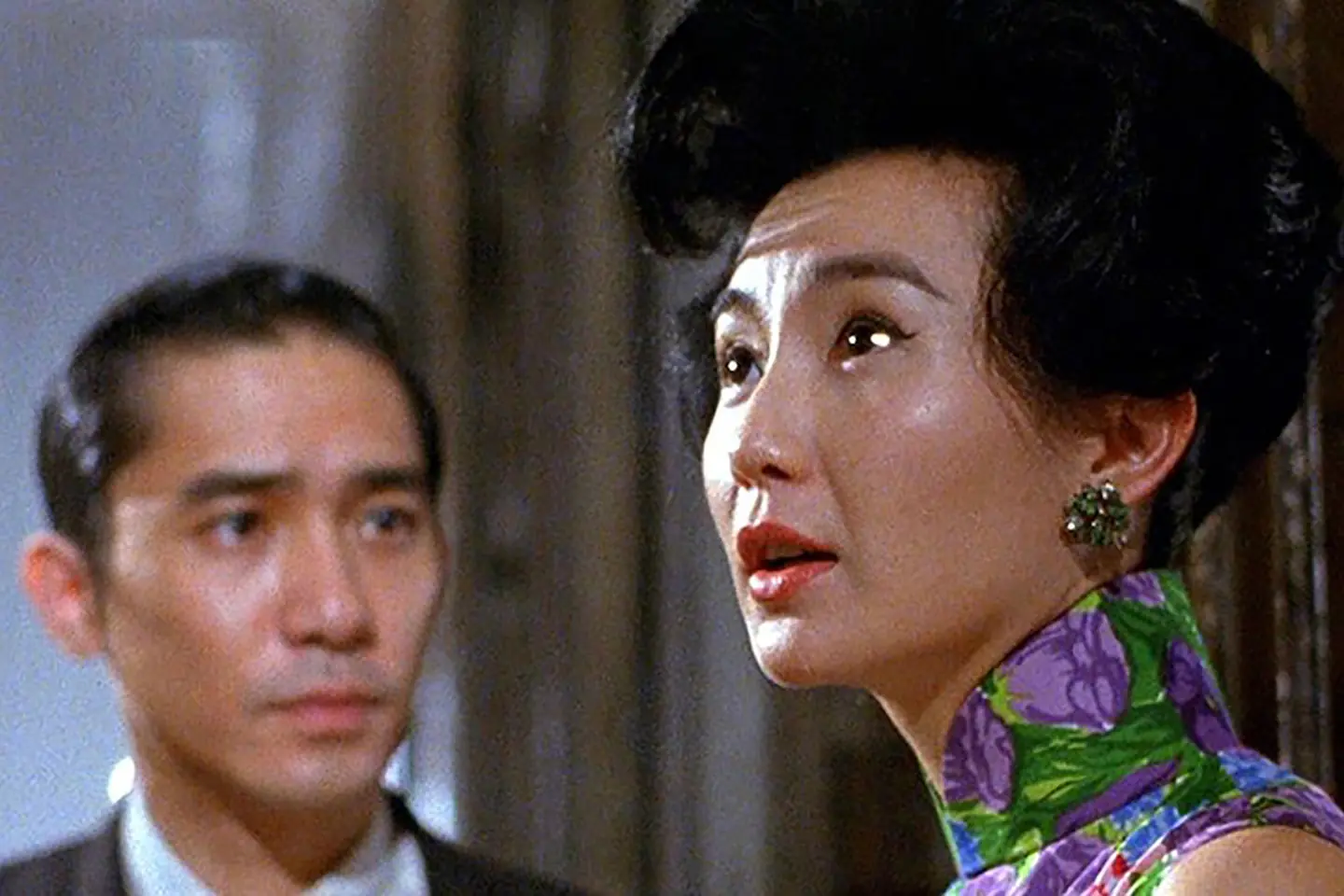
The characters promise each other that they “will never be like them,” trying to rise above the gray reality, rejecting the commonly established rules of the “game of life.” When it becomes clear that their relationship is heading in a rather predictable direction, Mrs. Chan and Mr. Chow realize that the feeling that connects them is beginning to be based only on desire and possession, drawing them closer to a world in which they do not want to live, to a social order in which they do not want to participate. Mr. Chow regretfully says, I thought we wouldn’t be like them. I was wrong. The recurring term “they” symbolizes not only the characters’ spouses but all of humanity, which is based on superficial feelings, unable to build genuine relationships that are more than just elements of the “grand theater of the world.”
Nostalgia
The sense of unfulfillment and longing, however, appears not only in every gesture and glance of Mrs. Chan and Mr. Chow but also in the surrounding space and in the extraordinary soundtrack that stays with the viewer long after the film ends. The unforgettable waltzes by Shigeru Umebayashi accompany the characters, usually during the most mundane, everyday activities, emphasizing the emptiness not only of daily life but, above all, the inner void of mental apathy that the characters try to hide behind swirling cigarette smoke or an impressionistic curtain of rain, just to avoid becoming part of what is real. The soundtrack becomes the echo of the characters’ sorrowful souls, who only find the true essence of the other person in silence.
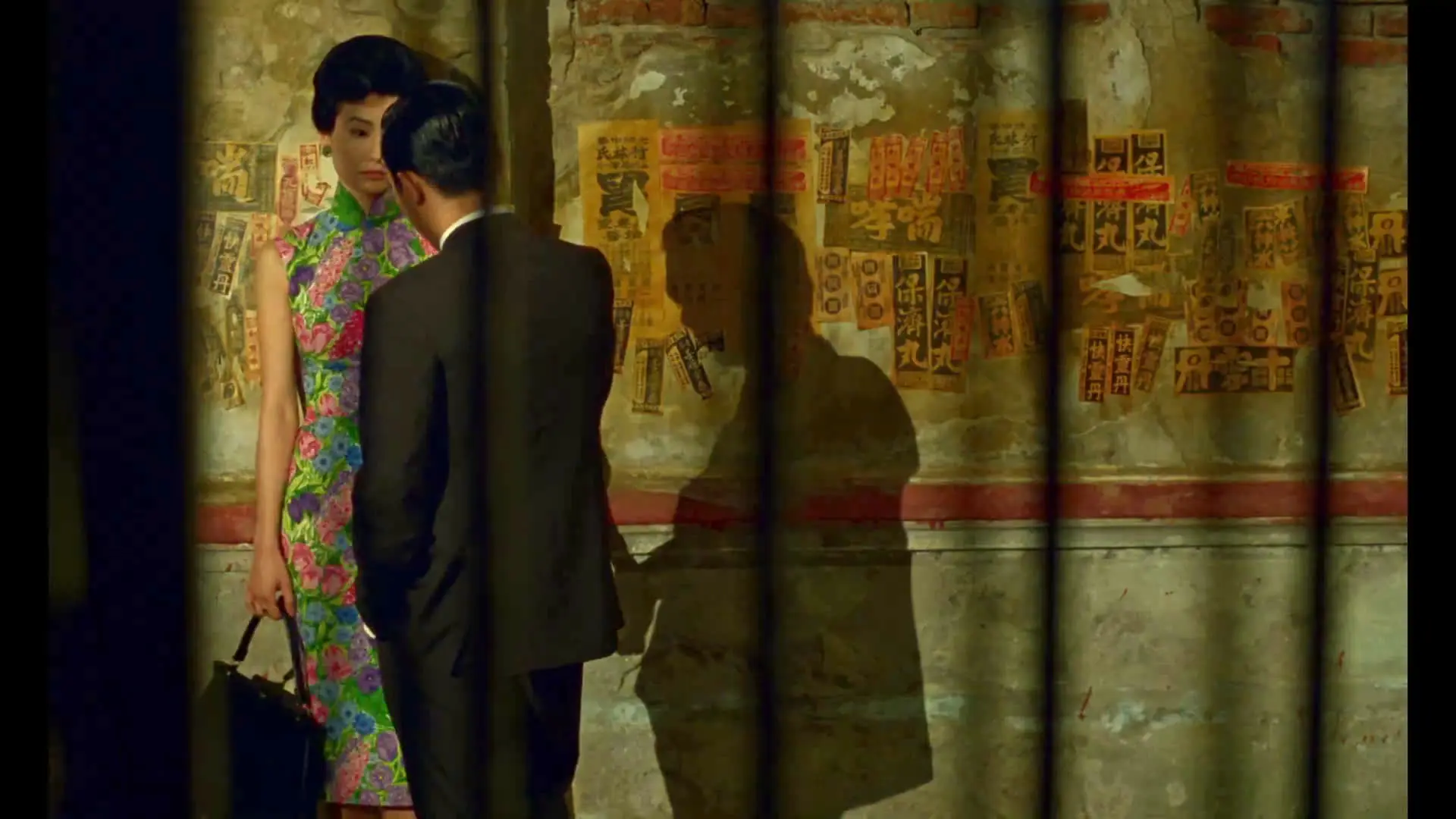
The recurring musical motif, like a mantra, always accompanies the director’s use of slow-motion editing, adding a contemplative character to every event on screen. Wong Kar-wai forces us to pause, to break free from the rush of daily life, and to start observing. The entire world depicted dances to the rhythm of the waltz; Mrs. Chan’s hips sway slowly to this memorable melody, and a simple trip to get noodles becomes a poetic allegory of loneliness in a large urban agglomeration. Cinematic haiku at its finest.
The characters cannot stop time or correct the mistakes of the past. The film’s ending and Mrs. Chan’s wistful gaze out the window do not indicate any forthcoming changes; every mistake made becomes impossible to rectify. That era has passed, and what belonged to it no longer exists—this is the reflection that the director leaves us with, expressing not only the essence of time, its inevitability, and the impact of indelible scars from the past on present life, but also the illusion of the real world, the essence of memory, which in many cases is based on a fragmentary image of a real event that takes on a completely different dimension and shape in the memory of several people. As Emilia Olechowicz aptly put it, Perhaps the richest and most fruitful life is the one we happen to lead in the memory of another person.
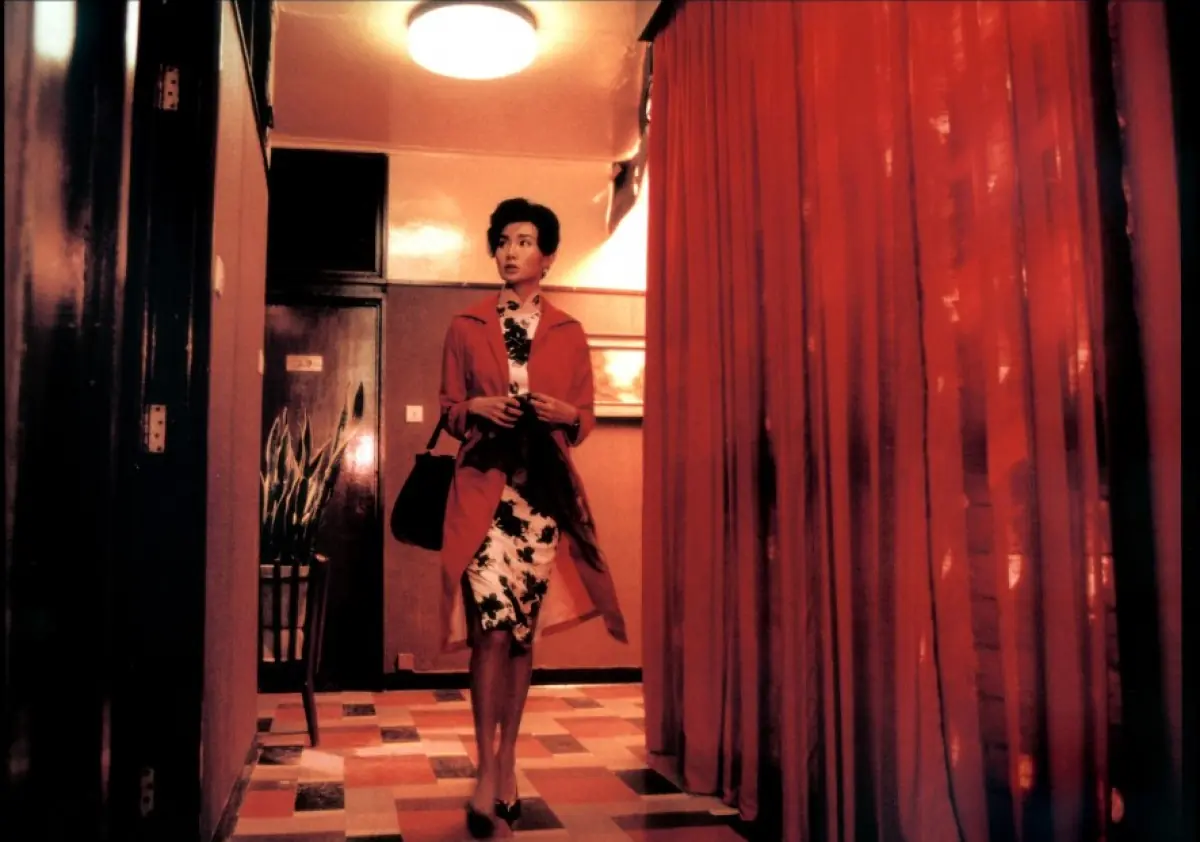
What lies behind us no longer exists. Or perhaps it never existed, maybe it was just a desire, a creation of our imagination, a fabrication of real events.
And isn’t every film narrative something more than just a fictional attempt to imitate reality, a patchwork of ideas and desires impossible to achieve in the real world?
Written by Karolina Boroń.

